Forgotten Realms is a campaign setting for the Dungeons & Dragons (D&D) fantasy role-playing game. Commonly referred to by players and game designers alike as "The Realms", it was created by game designer Ed Greenwood around 1967 as a setting for his childhood stories. Several years later, Greenwood brought the setting to publication for the D&D game as a series of magazine articles, and the first Realms game products were released in 1987. Role-playing game products have been produced for the setting ever since, as have various licensed products including novels, role-playing video game adaptations, comic books, and the film Dungeons & Dragons: Honor Among Thieves.

Baldur's Gate is a series of role-playing video games set in the Forgotten Realms Dungeons & Dragons campaign setting. The game has spawned two series, known as the Bhaalspawn Saga and the Dark Alliance, both taking place mostly within the Western Heartlands, but the Bhaalspawn Saga extends to Amn and Tethyr. The Dark Alliance series was released for consoles and was critically and commercially successful. The Bhaalspawn Saga was critically acclaimed for using pausable realtime gameplay, which is credited with revitalizing the computer role-playing game (CRPG) genre.
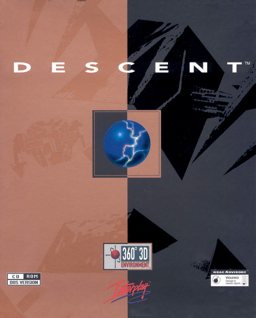
Descent is a first-person shooter (FPS) game developed by Parallax Software and released by Interplay Productions in 1995 for MS-DOS, and later for Macintosh, PlayStation, and RISC OS. It popularized a subgenre of FPS games employing six degrees of freedom and was the first FPS to feature entirely true-3D graphics. The player is cast as a mercenary hired to eliminate the threat of a mysterious extraterrestrial computer virus infecting off-world mining robots. In a series of mines throughout the Solar System, the protagonist pilots a spaceship and must locate and destroy the mine's power reactor and escape before being caught in the mine's self-destruction, defeating opposing robots along the way. Players can play online and compete in either deathmatches or cooperate to take on the robots.

Neverwinter Nights is a third-person role-playing video game developed by BioWare. Interplay Entertainment was originally set to publish the game, but financial difficulties led to it being taken over by Infogrames, who released the game under their Atari range of titles. It is the first installment in the Neverwinter Nights series and was released for Microsoft Windows on June 18, 2002. BioWare later released a Linux client in June 2003, requiring a purchased copy of the game to play. MacSoft released a Mac OS X port in August 2003.
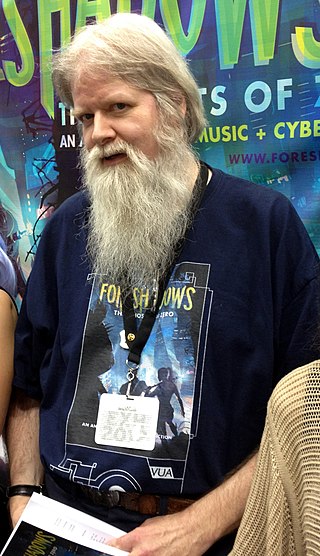
Ed Greenwood is a Canadian fantasy writer and the original creator of the Forgotten Realms game world. He began writing articles about the Forgotten Realms for Dragon magazine beginning in 1979, and subsequently sold the rights to the setting to TSR, the creators of the Dungeons & Dragons roleplaying game, in 1986. He has written many Forgotten Realms novels, as well as numerous articles and D&D game supplement books.
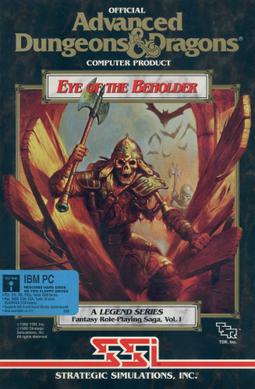
Eye of the Beholder is a role-playing video game for personal computers and video game consoles developed by Westwood Associates. It was published by Strategic Simulations, Inc. in 1991, for the MS-DOS operating system and later ported to the Amiga, the Sega CD and the SNES. The Sega CD version features a soundtrack composed by Yuzo Koshiro and Motohiro Kawashima. A port to the Atari Lynx handheld was developed by NuFX in 1993, but was not released. In 2002, an adaptation of the same name was developed by Pronto Games for the Game Boy Advance.
Faerûn is a fictional continent and the primary setting of the Dungeons & Dragons world of Forgotten Realms. It is described in detail in several editions of the Forgotten Realms Campaign Setting with the most recent being the 5th edition from Wizards of the Coast, and various locales and aspects are described in more depth in separate campaign setting books. Around a hundred novels and several computer and video games use Faerûn as the setting.

Stonekeep is a role-playing video game developed and released by Interplay Productions for the PC in 1995. It is a first-person dungeon crawler game with pre-rendered environments, digitized characters and live-action cinematic sequences. Repeatedly delayed, the game that was supposed to be finished in nine months took five years to make.

Baldur's Gate is a fantasy role-playing video game that was developed by BioWare and published in 1998 by Interplay Entertainment. It is the first game in the Baldur's Gate series and takes place in the Forgotten Realms, a high fantasy campaign setting, using a modified version of the Advanced Dungeons & Dragons (AD&D) 2nd edition rules. It was the first game to use the Infinity Engine for its graphics, with Interplay using the engine for other Forgotten Realms-licensed games, including the Icewind Dale series and Planescape: Torment. The game's story focuses on a player-made character who travels across the Sword Coast alongside a party of companions.

Neverwinter Nights: Hordes of the Underdark is an expansion pack for the role-playing video game Neverwinter Nights produced by BioWare and published by Atari. The follow-up to the Shadows of Undrentide expansion, Hordes of the Underdark adds a campaign, prestige classes, and other features. The Windows version also includes new scripting options for the Aurora toolkit.

Eye of the Beholder II: The Legend of Darkmoon is a 1991 role-playing video game and the sequel to the first Eye of the Beholder. It used a modified version of the first game's engine, added outdoor areas and greatly increased the amount of interaction the player had with their environment, along with substantially more role-playing aspects to the game. A sequel, Eye of the Beholder III: Assault on Myth Drannor, was released in 1993.

King's Field is a 1994 action role-playing video game developed and published by FromSoftware for the PlayStation. It was FromSoftware's debut video game project after developing business software for eight years, as well as the first game in the King's Field series. In the game, navigating a vast underground labyrinth to discover the source of an invasion of monsters. Attacking and using spells are tied to a stamina meter, which is depleted with each action and must refill before the player can act again.

The Ruins of Undermountain is a boxed set for the Forgotten Realms campaign setting for the second edition of the Advanced Dungeons & Dragons fantasy role-playing game. The set was written by Ed Greenwood and published by TSR. It featured box cover art by Brom. and was published in 1991.
Steven E. Schend is a game designer and editor who has worked on a number of products for the Dungeons & Dragons fantasy role-playing game from TSR throughout the 1990s.
Western role-playing video games are role-playing video games developed in the Western world, including The Americas and Europe. They originated on mainframe university computer systems in the 1970s, were later popularized by titles such as Ultima and Wizardry in the early- to mid-1980s, and continue to be produced for modern home computer and video game console systems. The genre's "Golden Age" occurred in the mid- to late-1980s, and its popularity suffered a downturn in the mid-1990s as developers struggled to keep up with changing fashion, hardware evolution and increasing development costs. A later series of isometric role-playing games, published by Interplay Productions and Blizzard Entertainment, was developed over a longer time period and set new standards of production quality.
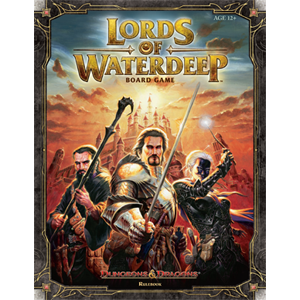
Lords of Waterdeep is a German-style board game designed by Peter Lee and Rodney Thompson and published by Wizards of the Coast in 2012. The game is set in Waterdeep, a fictional city in the Forgotten Realms campaign setting for the Dungeons & Dragons role-playing game. Players take the roles of the masked rulers of Waterdeep, deploying agents and hiring adventurers to complete quests and increase their influence over the city.
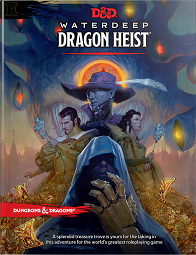
Waterdeep: Dragon Heist is an adventure module for the 5th edition of the Dungeons & Dragons fantasy role-playing game. It is the first part of the Waterdeep storyline and followed by a second adventure, Waterdeep: Dungeon of the Mad Mage.

Waterdeep: Dungeon of the Mad Mage is an adventure module for the 5th edition of the Dungeons & Dragons fantasy role-playing game. It is the second part of the Waterdeep storyline and follows the first adventure, Waterdeep: Dragon Heist.













